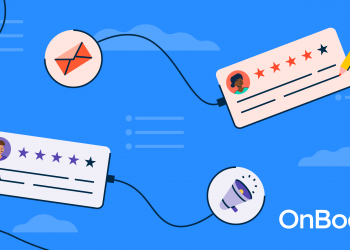Starbucks Logo: History, Meaning, Evolution, Hidden Details, and Visual Identity – crowdspring Blog
Starbucks is the most famous coffee house in the world, and like the Apple logo for Apple, Starbucks’ branding has contributed to the company’s success.
The distinct Starbucks logo in green and white has become so recognizable that Starbucks didn’t even put the company’s name on it.
The company operates in almost 80 countries with over 30,000 stores worldwide. By 2018, Starbucks was selling over 4 million cups of coffee daily – and shows no signs of slowing down.
How did Starbucks become so successful? And how has its visual identity contributed to the company’s success? And what makes the unique twin-tailed siren in its logo so iconic?
This article will tackle the Starbucks logo’s history, meaning, evolution, and hidden details to explore why the unique twin-tailed siren has become one of the most famous logos today.
The History and Evolution of the Starbucks logo
Starbucks origin
Three college students founded Starbucks: Gordon Bowker, Zev Siegl, and Jerry Baldwin on March 30, 1971.
Have you ever wondered why it’s called Starbucks?
The company was initially named Pequod, inspired by the classic American novel “Moby-Dick.” But the company name was later changed to Starbucks, taken from Pequod’s chief mate, Starbuck.
Its first physical store was established in Seattle’s historic Pike Place Market, allowing customers to take home fresh-roasted coffee beans, tea, and spices.
Want a free brand review?
Answer 5 short questions and we will send a custom report with actionable insights and specific actions you can take to build a stronger brand.
We just emailed the info to you.
History and meaning of the Starbucks logo
Starbucks originally had a brown brand color and theme instead of its current iconic green branding. But after Howard Schultz joined the company in 1982, Starbucks started rebranding and swapped brown to green in 1987. Schultz was appointed as Starbucks CEO that same year.
Terry Heckler designed the first Starbucks logo. He based the famous two-tailed siren on a 16th-century Norse woodcut. Old marine books inspired him.
Later, Starbucks would embark on a series of logo redesigns, but the iconic siren consistently remained the center of its logo refreshes.
The Starbucks logo is unique for a reason. Here is the meaning of some of its elements:
- Font. The Starbucks logo’s font has always been simple and bold. It’s a sans-serif font spelling out the brand name clearly for people to read. But in the current iteration of the logo, the company’s name doesn’t appear.
- Color. The colors used for its current logo are green and white. Green is the background color symbolizing wealth, healing, and nature. White is used as the main siren symbol, representing simplicity and cleanliness.
- Shape. Starbucks has always sported a circular logo, one of the most common shapes in graphic design. A circle-shaped logo appears neat, simple, and easy to recognize. It could also mean a never-ending struggle to achieve one’s goals.
- Icon. The twin-tailed siren represents the sea and Seattle – the place of origin for Starbucks. There’s no confirmed reason why the siren was used for the Starbucks logo, but many believe it represents mystique, obsession, and addiction.
Evolution of the Starbucks logo
1971
The original Starbucks logo was designed with a topless siren, a fully visible torso, and twin tails. The design wasn’t as crisp as the newer versions since a wooden carving inspired it.
The original design’s siren was enclosed in a circular ring with the text “Starbucks Coffee, Tea, and Spices,” highlighting the main products sold at the company’s first coffee shop. The logo’s first brand color was coffee-brown.
1987
After Howard Schultz took over the company in 1987, the Starbucks logo received a significant refresh. The new logo aimed to soothe customers’ eyes by using the colors green, white, and black, representing freshness, opportunity, and growth.
This new Starbucks logo also sported recent changes in some of its elements including the siren, which is flowier in design than the more detailed original brown logo. The text has also changed to “Starbucks Coffee,” which was more in line with the company’s main product.
1992
Starbucks underwent a logo redesign in 1992, with the siren more up-close and no longer showing its entire body. The signature twin tails are still visible through the frame with no changes to its colors, text, or shape.
But this logo design quickly became problematic for Starbucks as the design was easy to replicate. More and more people worldwide began to sell knock-off Starbucks products, making it difficult for consumers to differentiate real from fake.
2008
In celebration of Starbucks’ 40th anniversary, the brand attempted a rebranding effort. The company decided to reimagine its original logo, probably inspired by the new hipster movement of the year.
The company received a massive backlash from the public, and the rebranding attempt failed as people had become all too familiar with the signature green branding.
2011
Starbucks heard the plea of its customers and decided to bring back its signature branding – with a twist. Starbucks recognized its strong branding and fame, leading to its new, modern, and minimalistic logo design.
In 2011, Starbucks redesigned its logo and removed signature elements from its previous logos including the text, stars, and the black background color. The brand is famous enough that the logo is still recognizable even without these familiar elements.
Hidden details behind the Starbucks logo
The siren is the main icon in the Starbucks logo. At first glance, it appears to be perfect and symmetrical. However, years of design have inspired designers to apply subtle changes to reflect real-world realities.
For example, during the logo revamp in 2011, the designers decided to smooth out the imperfections of the siren in the logo making her face more symmetrical. They wanted to make the logo cleaner and crisper than its original logo.
But after several years of logo refreshes, the designers were still unsatisfied. Ultimately, they decided to put in an element of humanity by making the siren’s eyes asymmetrical. The shadow of the right eye is more elongated than the left.
Why does the Starbucks logo work?
The Starbucks logo is effective because it tells a story, albeit not related to coffee.
Your logo should reflect what you do as a business. But, you can also consider other aspects of your brand such as what inspired it, its place of origin, and more to tell a compelling story.
For example, the center of the Starbucks logo is the twin-tailed siren which represents many things, including the novel that inspired it, Starbucks’ place of origin, mystery, and more – which leaves people thinking.
Starbucks brand colors are also unique as most coffee houses use brown or darker shades to reflect their products. Green and white are natural colors that we can see in nature. These colors soothe people’s eyes and help differentiate Starbucks from its competitors.
All these aspects of its visual identity have helped Starbucks develop memorable and distinctive branding for its customers.
9 Starbucks facts you probably didn’t know
There’s more to Starbucks than meets the eye. The biggest coffee company in the world wouldn’t be a success if there weren’t some subtle elements that helped propel it. Here are 9 Starbucks facts you probably didn’t know:
- Starbucks tables are round to ward off loneliness. Round tables appear more welcoming and make solo coffee drinkers feel less alone. The shape also helps save space and can fit more people than traditional square tables with edges.
- Starbucks coffee masters wear black aprons. You can distinguish a Starbucks employee’s rank through their apron. Coffee masters earn their black aprons by mastering everything related to coffee. So, if you have a question about your drink, look for an employee wearing a black apron.
- The Starbucks 1971 logo was considered controversial. The original Starbucks logo showed a siren with a bare torso and exposed nipples. As part of the logo redesign in 1987, designers covered up the torso with longer hair to appear more appropriate.
- You can make over 87,000 drink combinations in Starbucks. One reason why Starbucks is so popular is because of its customizable drinks – and its secret menu. The secret menu is an extensive list of drink combinations not found on the regular menu. You can research these secret combinations on the internet or make one yourself.
- Starbucks donates old food. The donation started in 2016 when the company pledged to donate 100% of its leftover food to the hungry. Most food establishments ban this practice, but Starbucks remains committed to this Hunger Relief program.
- Starbucks considered the Chantico drink a failure. In 2005, the Chantico was dubbed a “drinkable dessert” drink. It was a 6-ounce chocolate drink supposedly mimicking the European version of a hot chocolate. The drink failed terribly with people describing it as too rich and heavy or impossible to customize. Starbucks pulled the drink the following year.
- Starbucks spends more on employee health care than coffee beans. The company is known for its generous employee benefits package, especially in health care. In 2008, Starbucks CEO Howard Schultz claimed that the company spent over $300 million on employee health care.
- Starbucks has been sued for under-filling its lattes. Two people from Northern California sued the coffee house in March 2016 claiming that the lattes are “1/4 inch below cup rim.” Starbucks denied the allegations and the lawsuit was dismissed in January.
- The CIA also enjoys Starbucks. It’s no secret that many people want a cup of Starbucks. Even the CIA headquarters in Langley, Virginia has its own Starbucks store.
Starbucks continues to enjoy its success because of three key factors: a strong visual identity, a compelling brand story, and the commitment always to put its customers at the heart of its business. And of course, a good cup of coffee.
So, when developing your brand, remember to learn from Starbucks. Find ways to be unique and look for opportunities to differentiate from competitors.
Source by www.crowdspring.com











